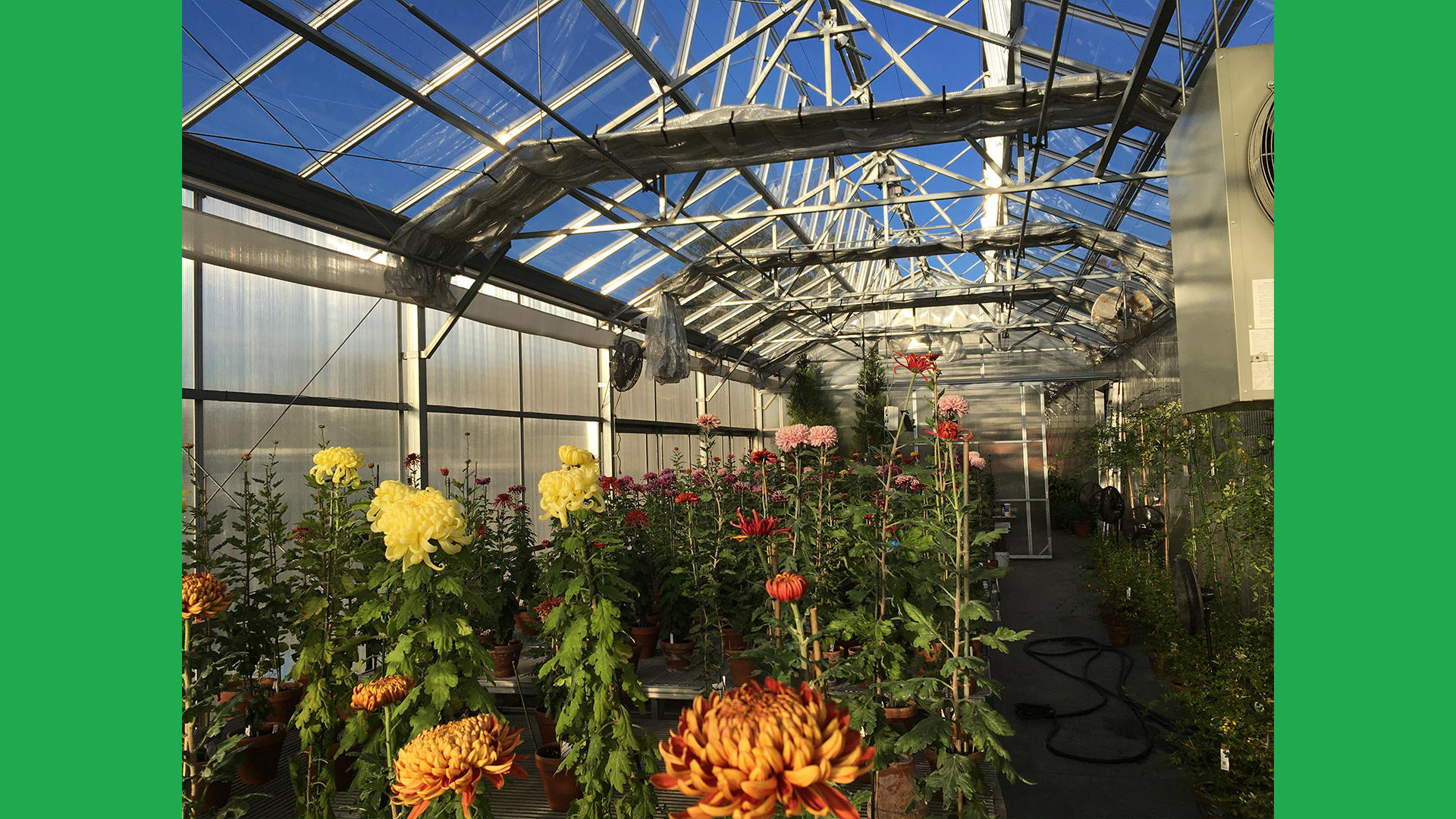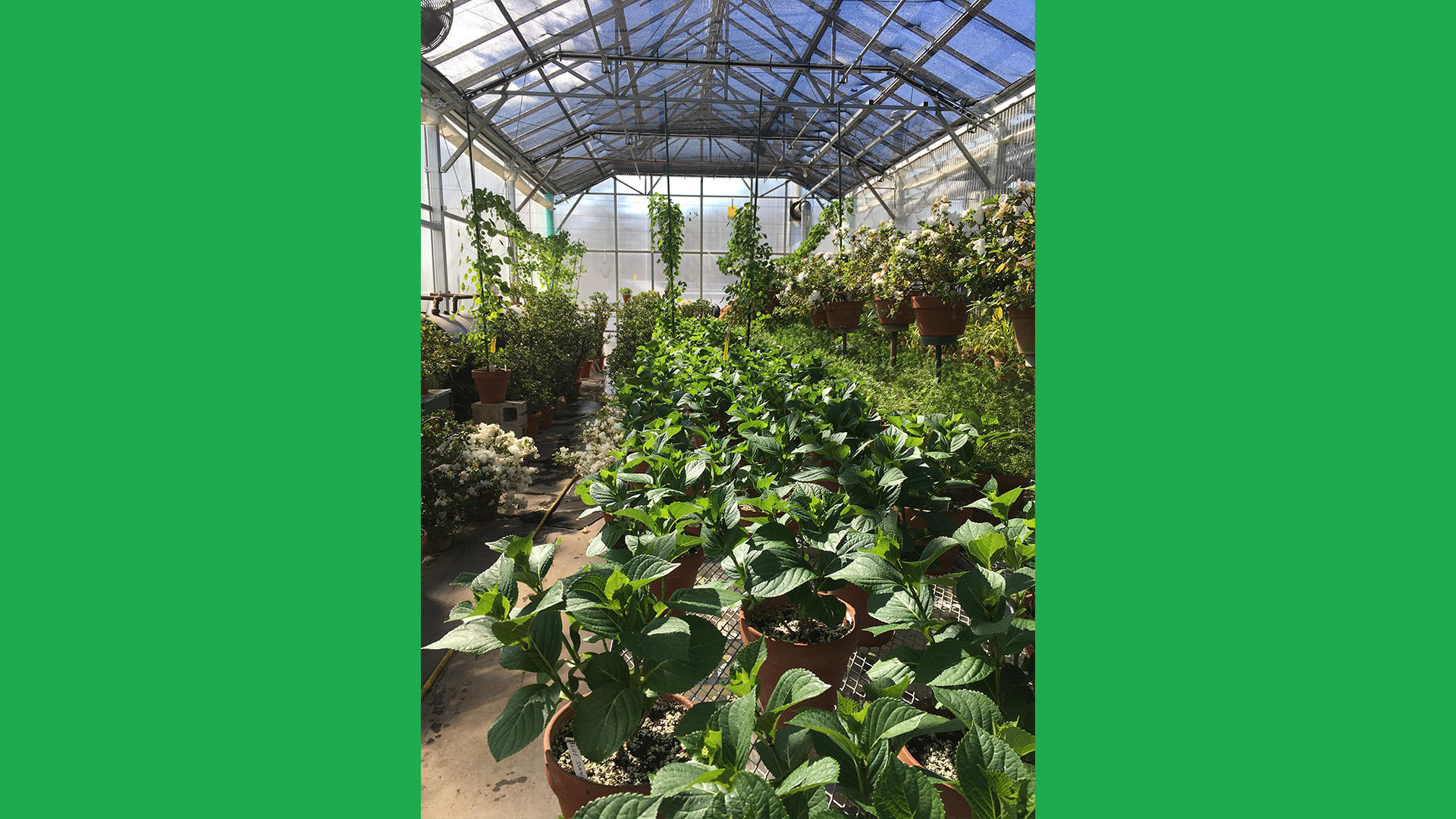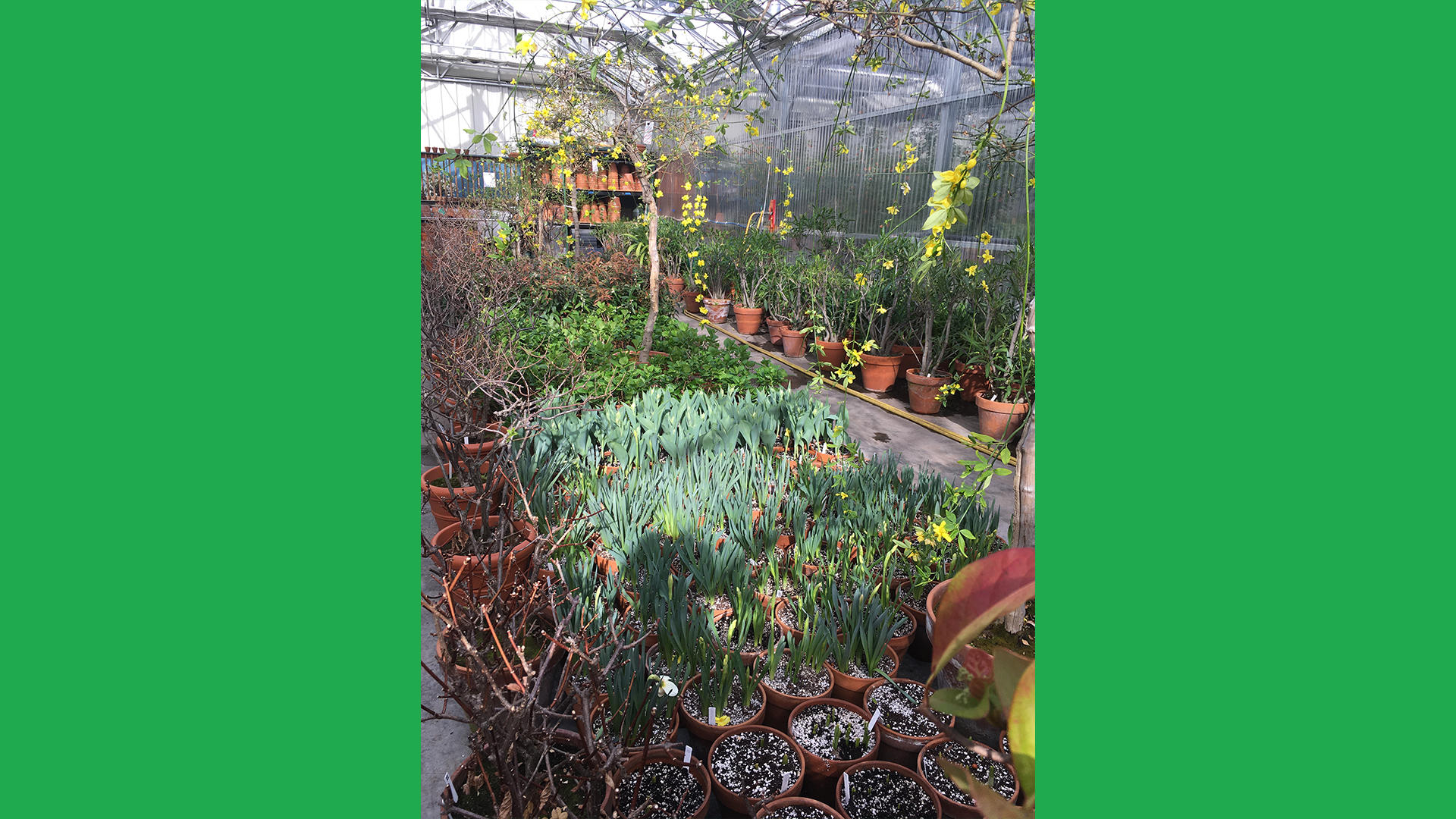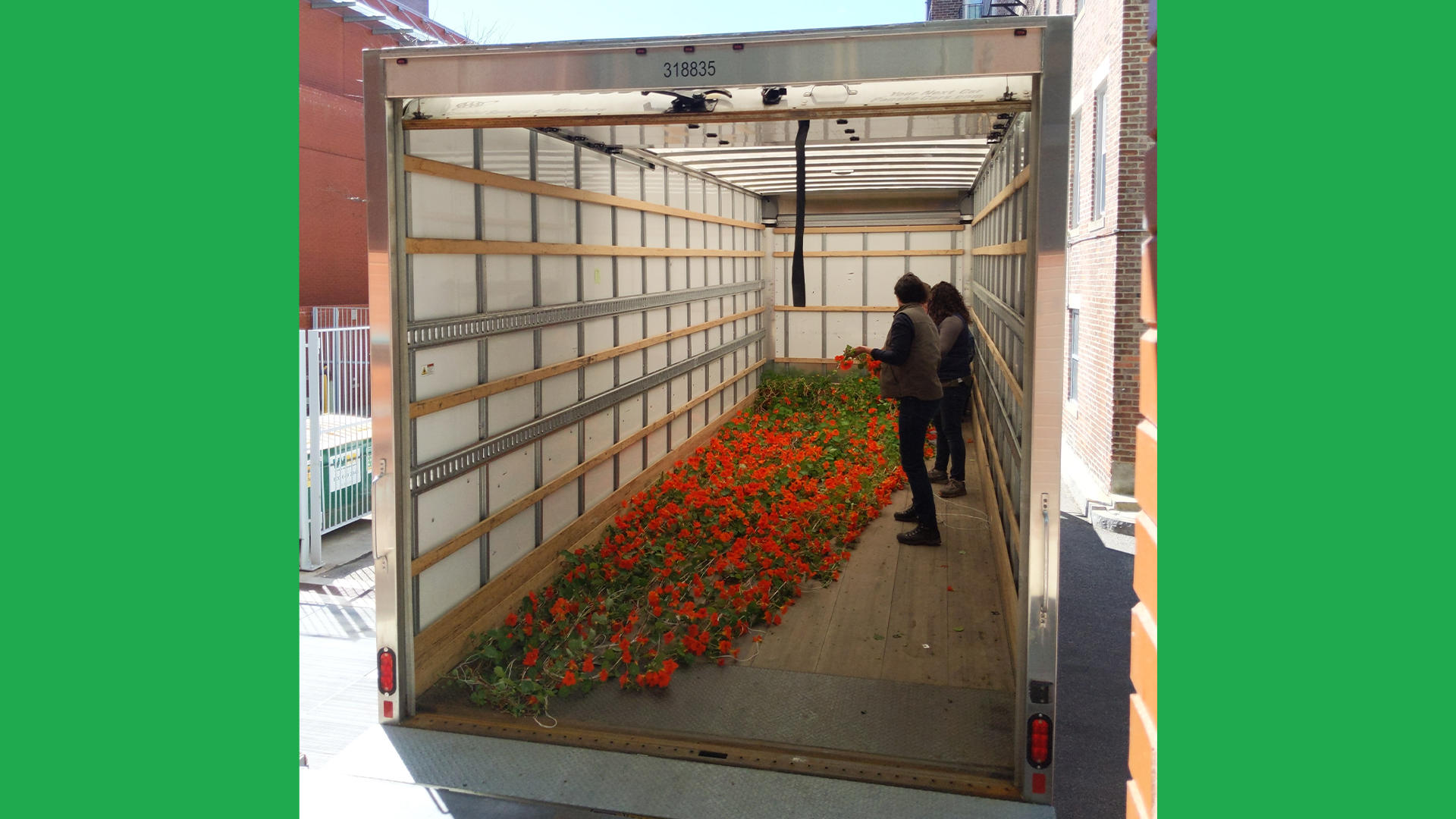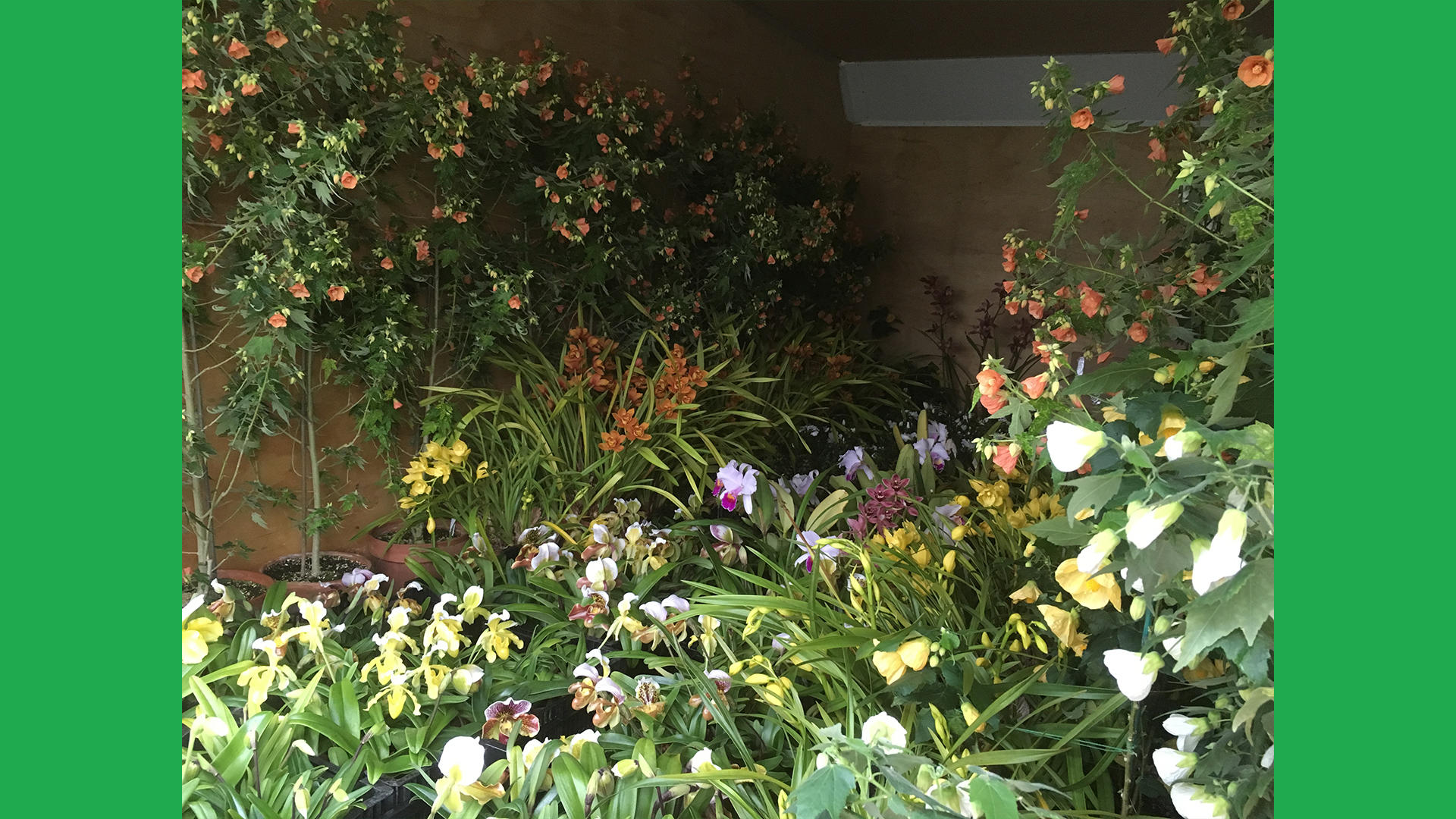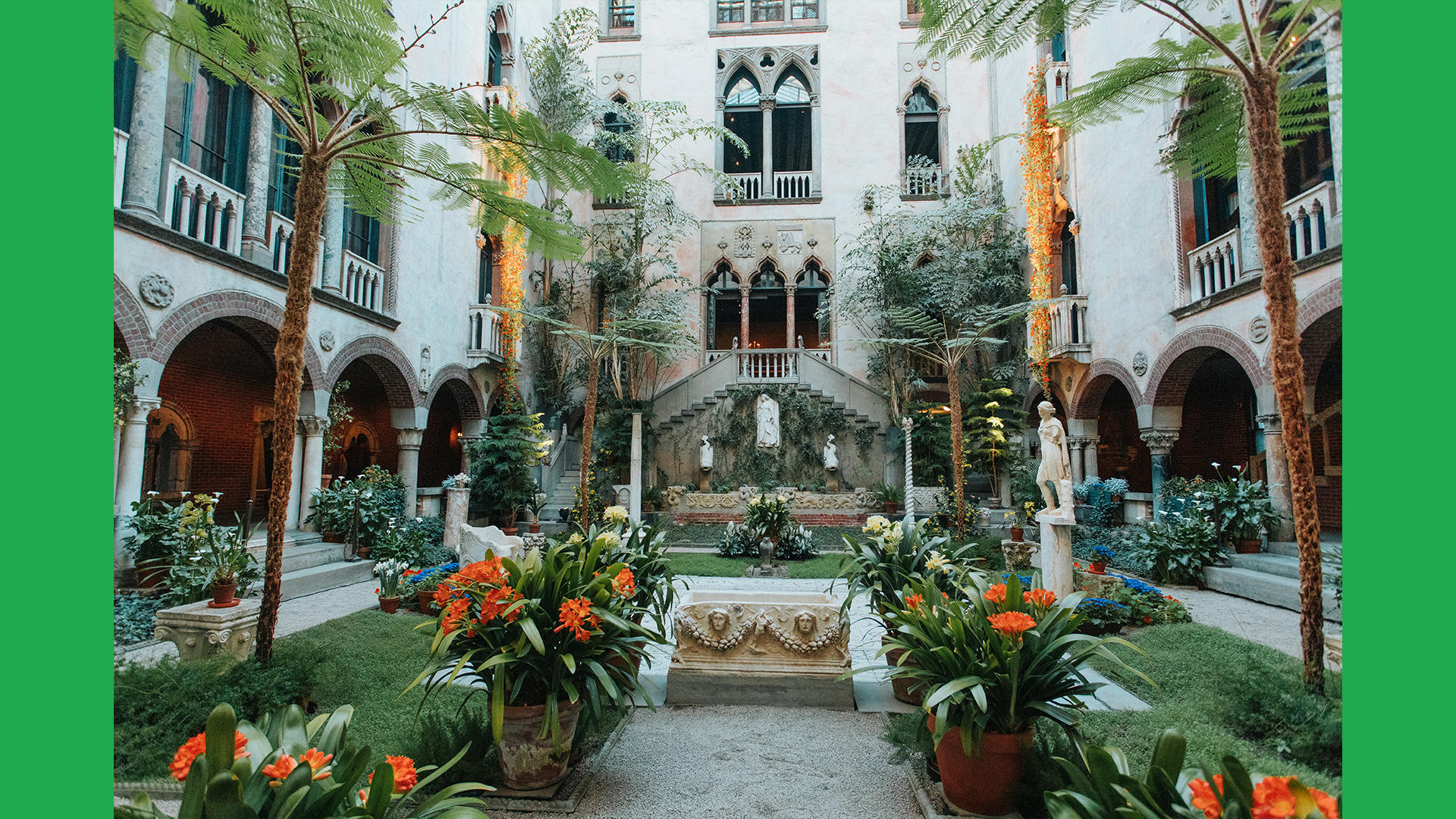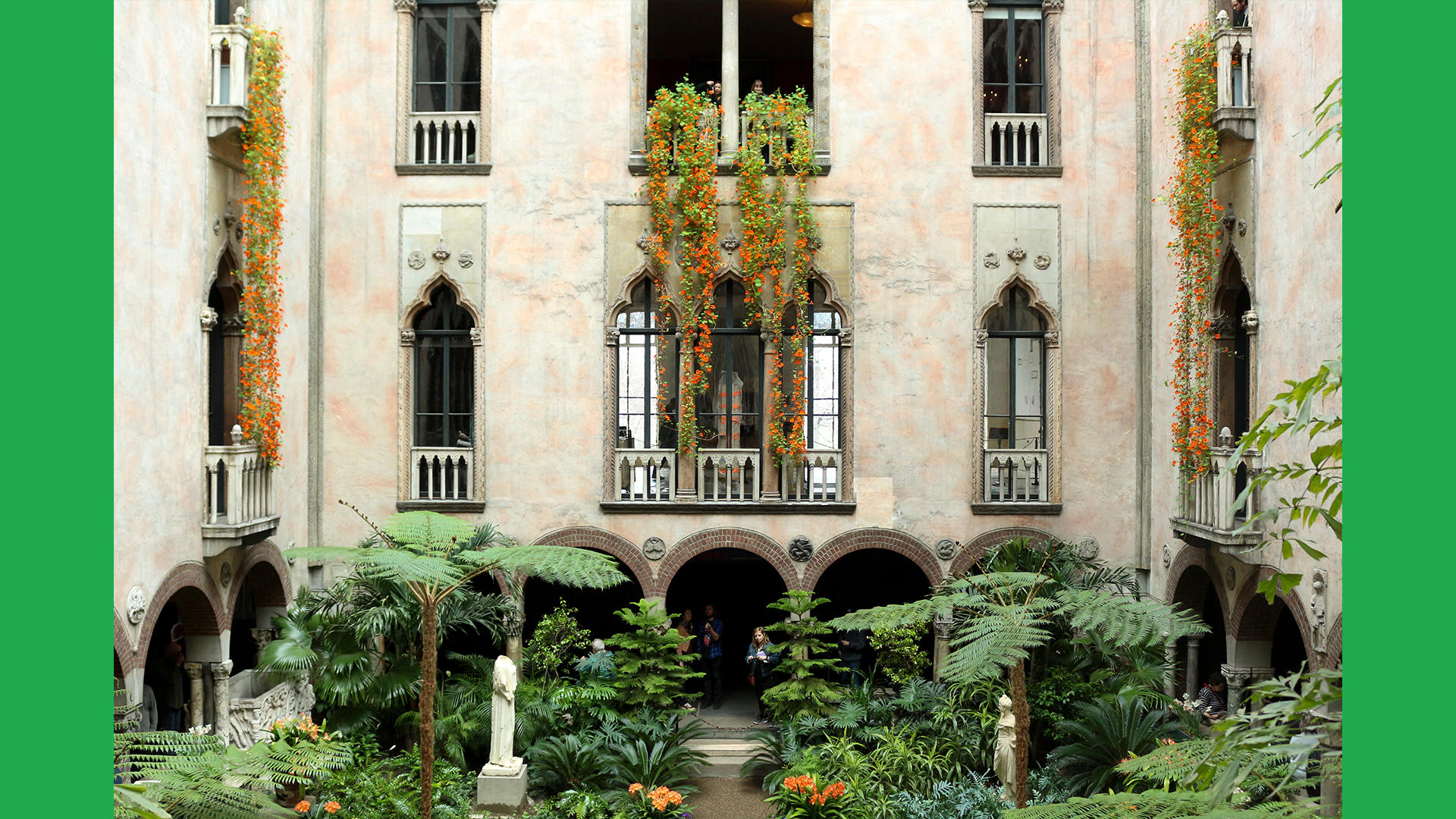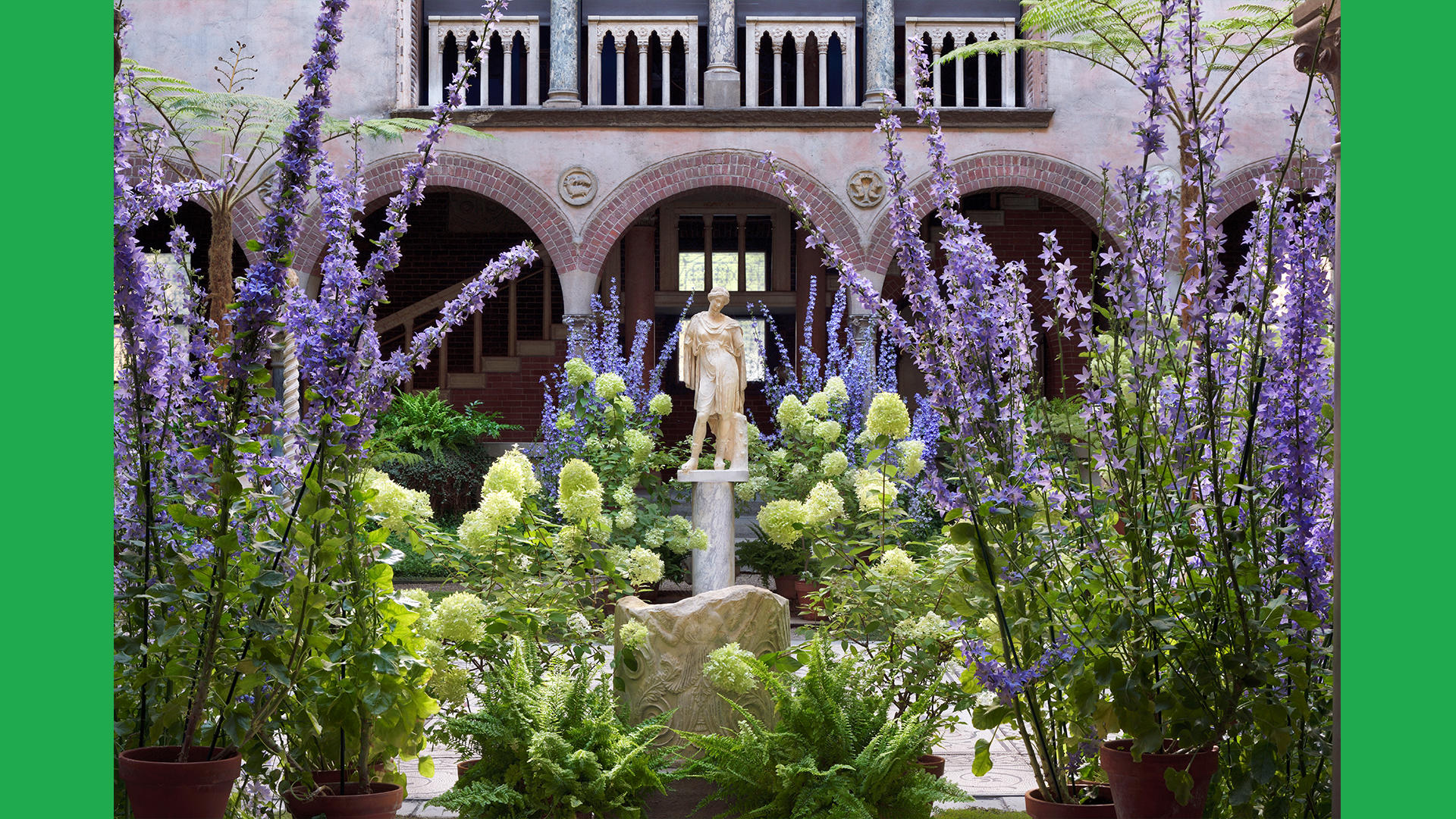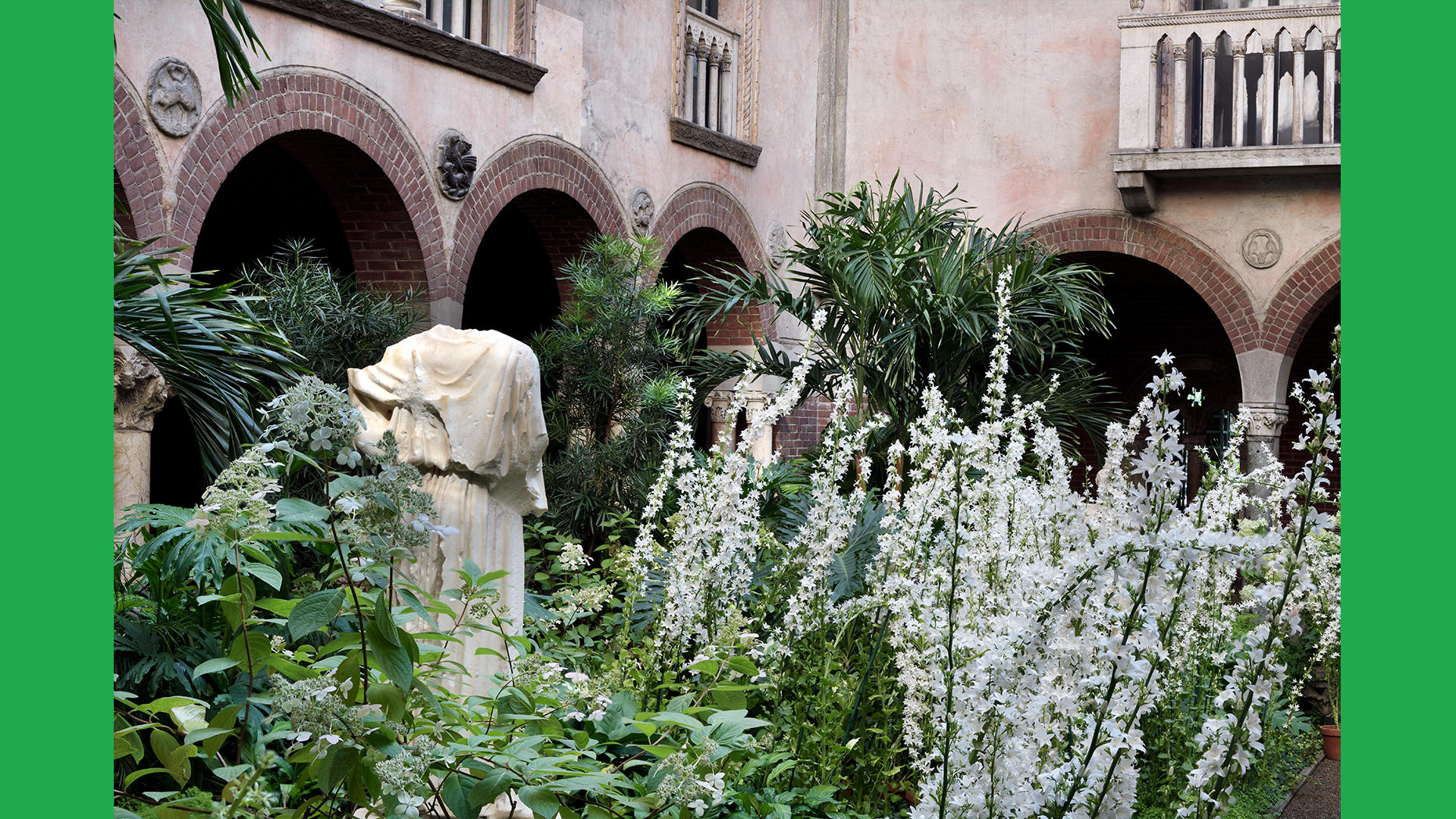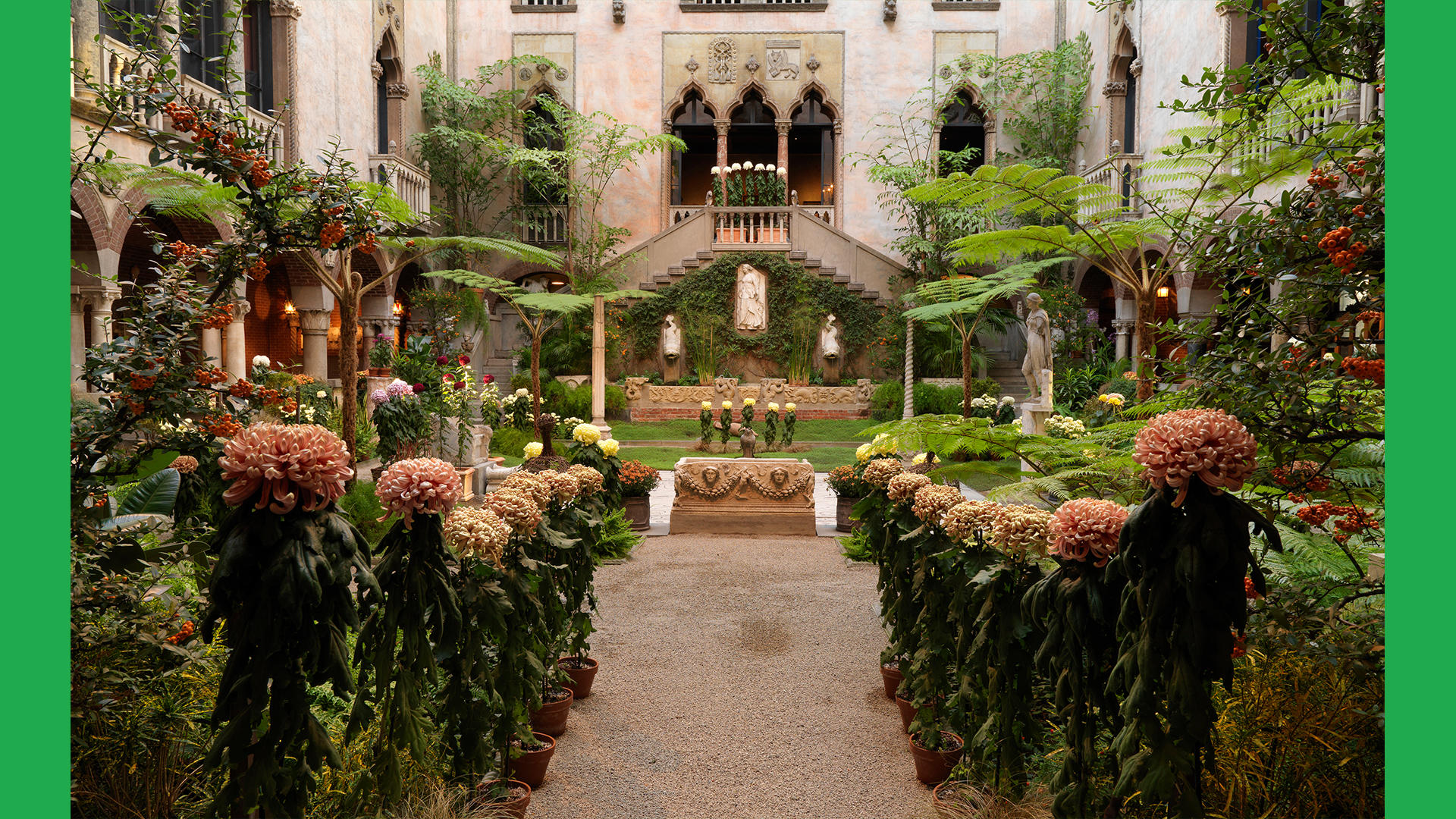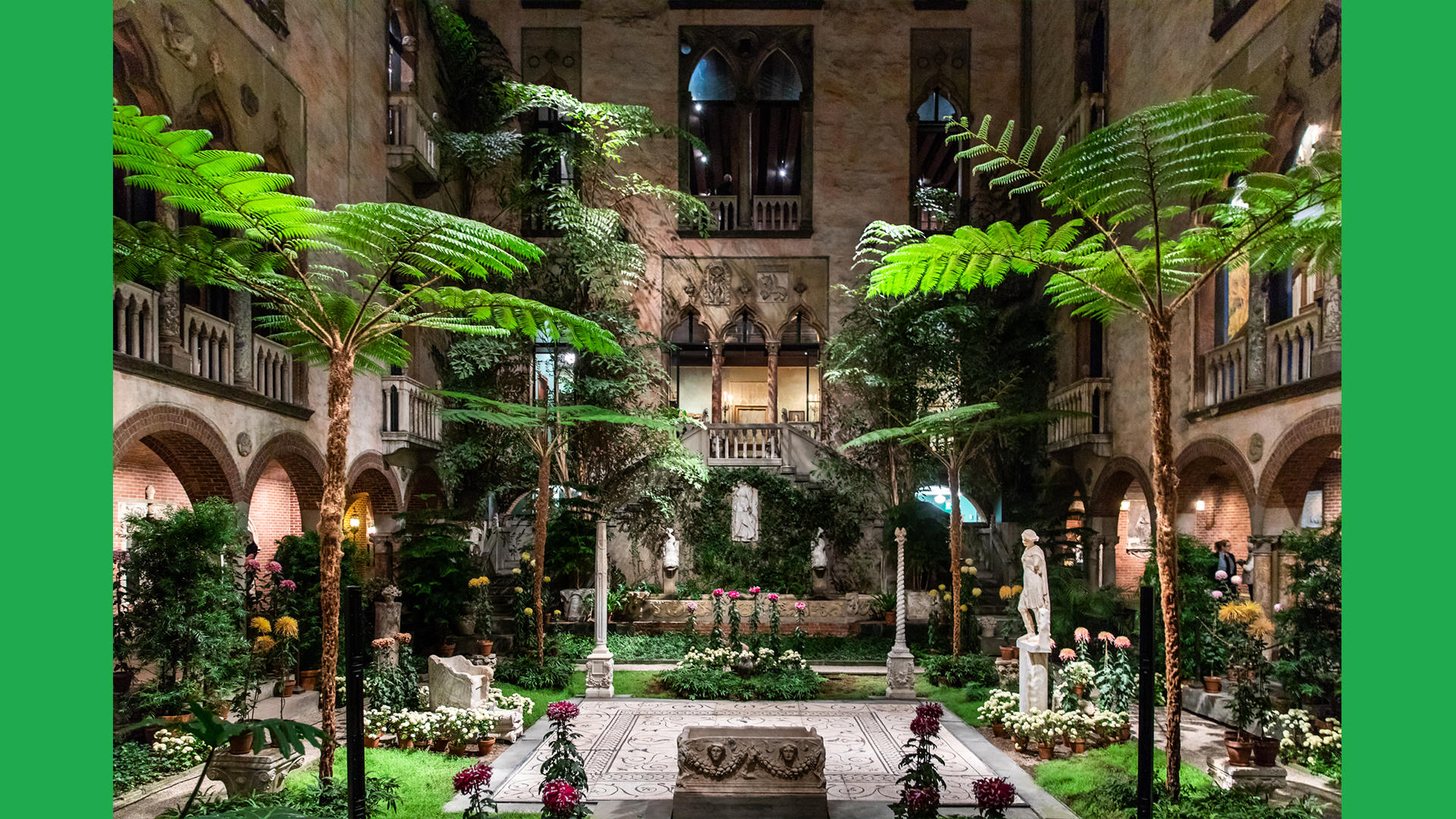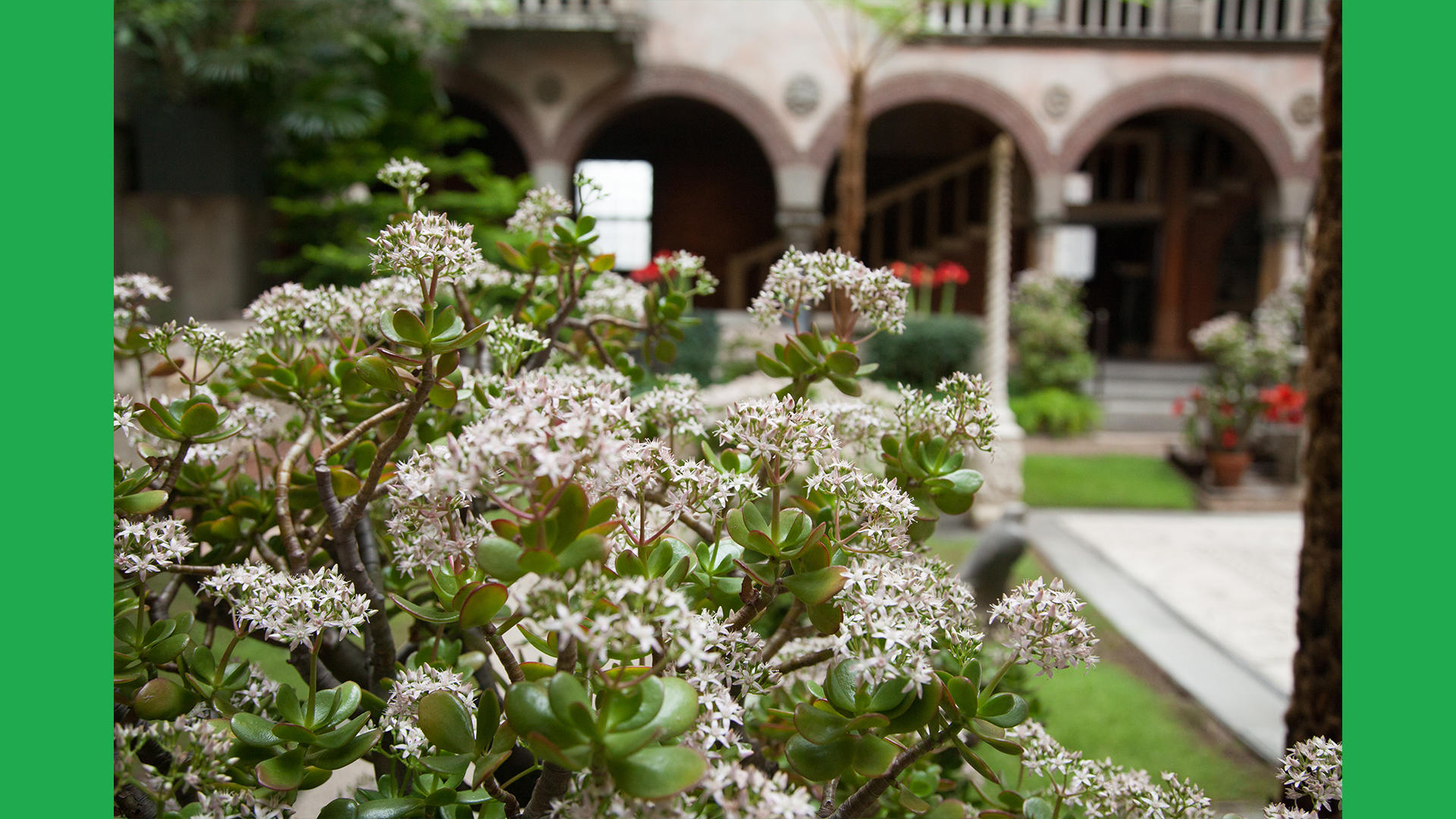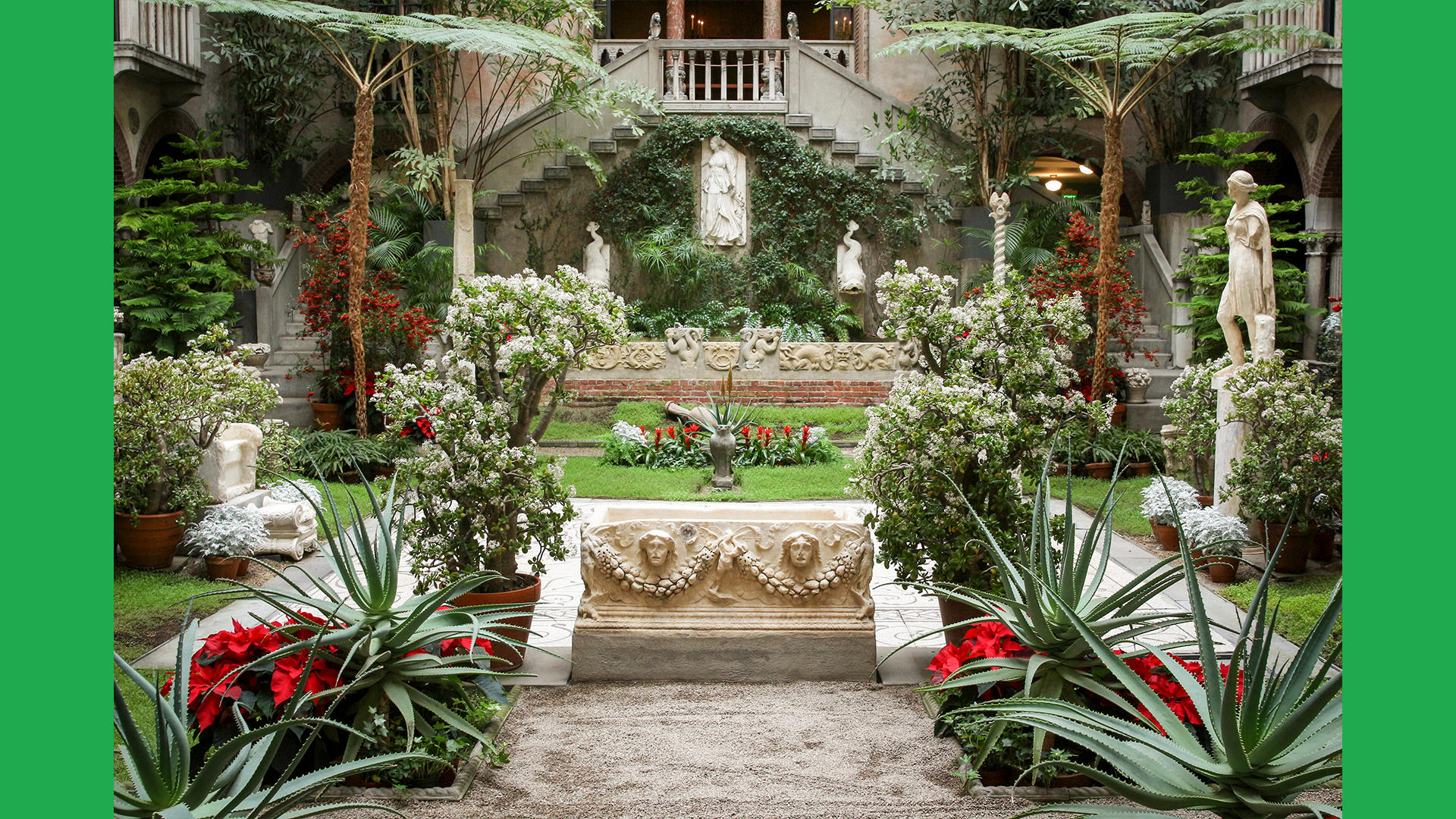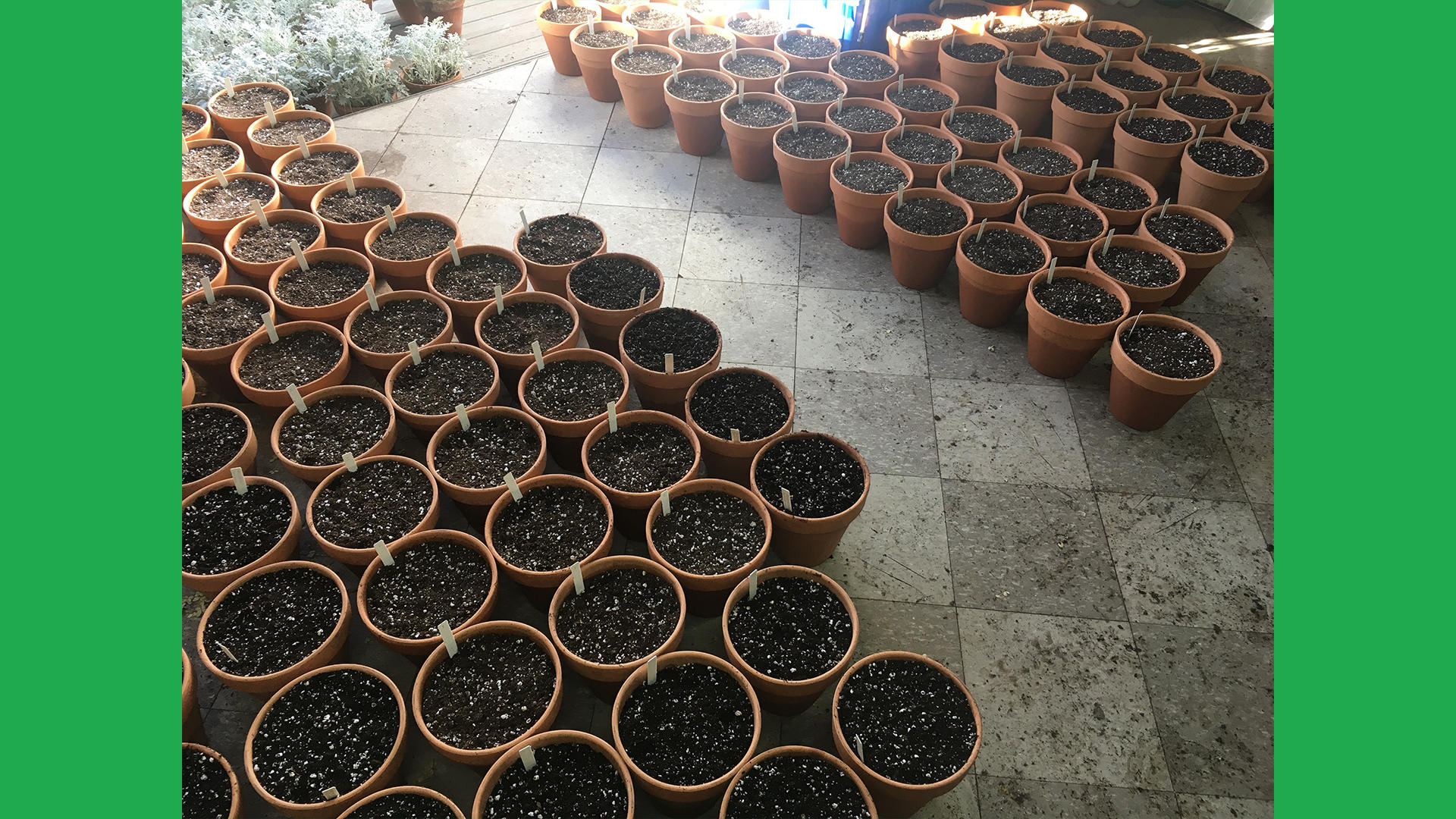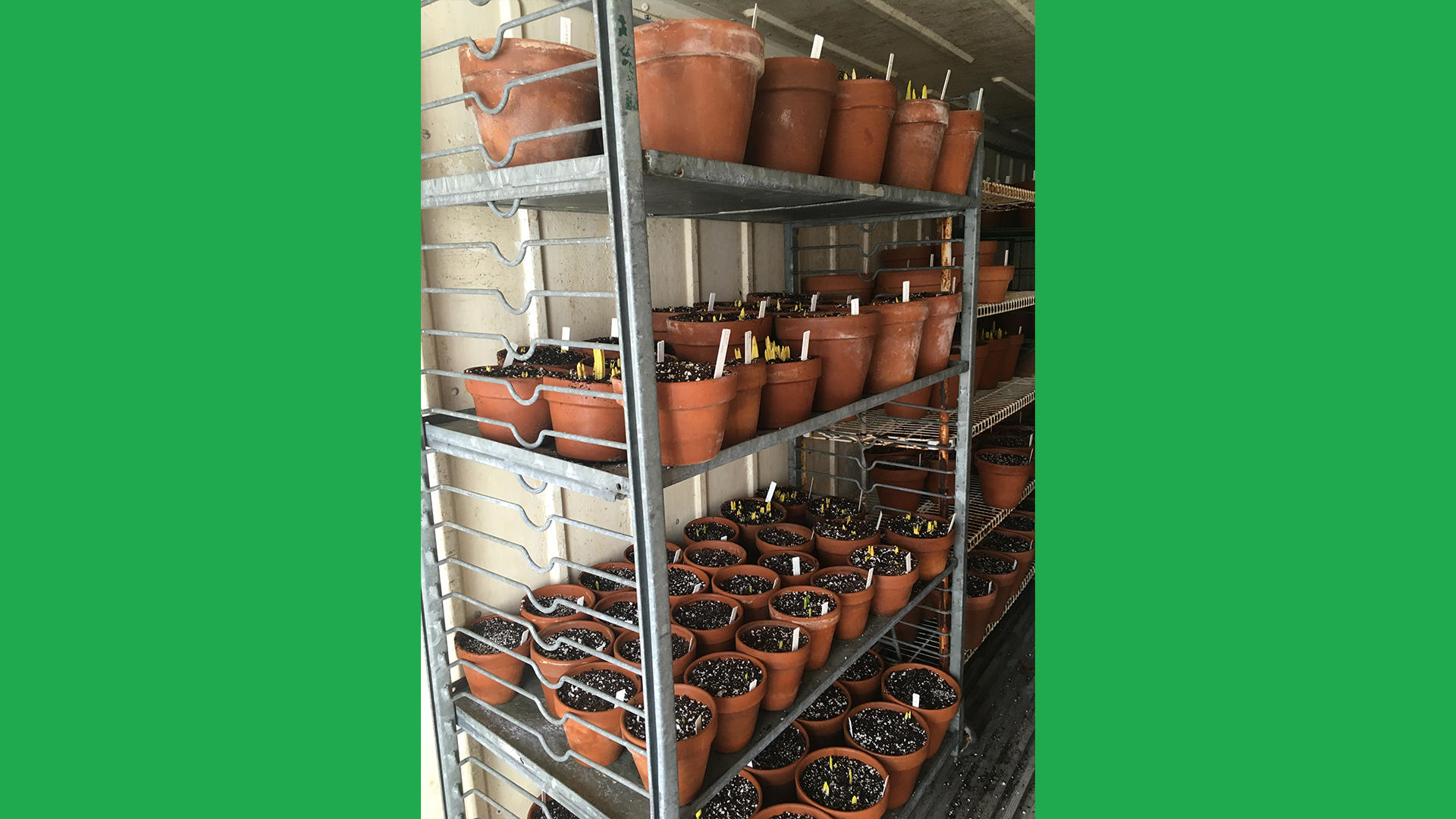Throughout its history, the Isabella Stewart Gardner Museum has been well-known for its vibrant, living Courtyard. But few plants can thrive forever inside the Courtyard itself—so where do they all grow? How are they cared for? Learn more about the Courtyard, a history of horticulture, our greenhouse and the Living Collection.
The Courtyard
As the most iconic view of the Gardner Museum, the Courtyard is a focal point for visitors from near and far. With its living plants and lush, ever-changing display, the Courtyard has been a constant source of wonder and fascination from Isabella's day to now.
While the glass roof's solar protectant helps safeguard the Museum's art work from light damage, it doesn't allow the plants to get the sunlight they need. They spend most of their lives somewhere else.

photo by Nic Lehoux
A History of Horticulture
Long before she was a patron of the arts, a passionate music fan, or even a person of renown among her fellow Bostonians, Isabella Stewart Gardner loved to garden—but not by herself! In 1884, she and her husband Jack inherited Green Hill, a Gardner family estate in Brookline with a thriving garden and large greenhouses managed by Charles Atkinson, an English-trained and award-winning gardener. After Charles retired in 1895, a man named William Thatcher continued Charles's careful work and helped to provide most of the plant material displayed in the Courtyard from the Museum's opening in 1903 through Isabella's death in 1924.
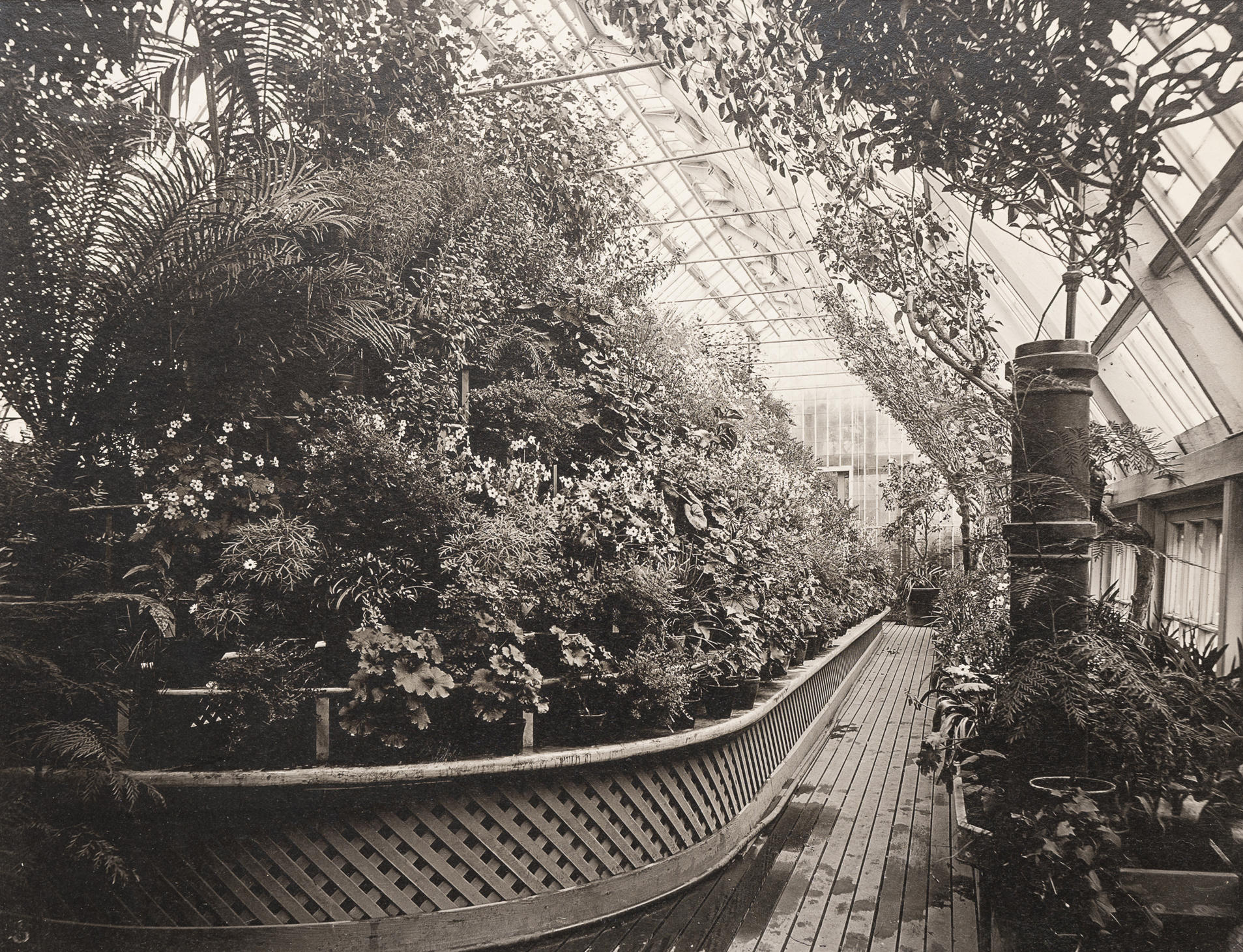
Gelatin silver print.
Thomas E. Marr and Son (active Boston, about 1875-1954) Fifty-one Photographs of Green Hill, Brookline, Massachusetts, 1905.
Prior to the construction of the New Wing in 2012, a series of other buildings—including several wooden and plexiglass houses—were used to house plants, gardening supplies, and other horticultural tools needed to care for each of the Courtyard's majestic shows. The former Carriage House contained office space for the Horticulture team and a potting shed connected to the greenhouses.
Museum staff also grew and tended to plants at off-site greenhouse space in Brookline, Natick, and Wellesley.

photo by Lynn McLarin
Stan Kozak, former Chief Horticulturalist, standing in the old on-site greenhouse, about 1973
New Nursery and Greenhouses
Horticulture operations were moved to new, custom-built greenhouses and growing space in 2011, and the existing structures on-site were torn down as part of the 2012 construction of the New Wing. The Gardner's nursery and greenhouses are working spaces not open to the public.
The six-acre site includes heated greenhouses, cold frames, and outdoor growing space. With over 10,000 square feet under glass in separate, climate-controlled spaces, our Horticulture team is able to speed up and slow down the growth of many plants, sometimes "forcing" plants to grow out of their natural season to bloom early or chilling them a bit to ensure they last longer.
Freshening Up
Each Courtyard display requires many more plants than those seen at any given time. The Horticulture team propagates new plants each week from cuttings, seeds, or division. It's a bit of a beautiful whirlwind!
Since very few plants actually grow inside the Courtyard—and even fewer can withstand the difficult conditions of the Courtyard's atmosphere—most need swapping out or refreshing once a week. Our Horticulture team works hard to keep things in good shape, sometimes even right before your eyes!
Nearly all of the flowering and foliage plants are grown in the greenhouses and transported to the Museum in a large, climate-controlled box truck. A typical week's Courtyard refresh means a full truck in the morning and a full truck at night!
The Living Collection
Part of the tending of our Courtyard displays also happens at a macro-level. Hanging nasturtiums, chimney bellflowers, and single-stem chrysanthemums anchor seasonal shows.
The nasturtiums and chrysanthemums have roots that date back to Isabella's time, while other plants are more recent additions to the Gardner tradition, such as the 60+-year-old flowering jade trees seen in the annual Holiday Garden in December.
Seasonal Displays
The Horticulture team has the exciting challenge of displaying a wide range of plants—from orchids and tropicals to perennials native to the Boston area—that couldn't live together in the same outdoor climate. They craft beautiful displays that complement the stunning architecture, sculptures and objects of the Courtyard.
For each seasonal display, horticulturalists install specimens from the living collection and new trials alongside our tried-and-true stars of the show. Clivia and Agapanthus, two South African natives that have been in the collection for over five decades, are shown each year with the nasturtiums and chimney bellflowers, respectively.
Introducing new plants to the Courtyard takes time, often starting over a year before the display is scheduled. To complement the more traditional pairings, the Horticulture team is constantly experimenting with new plants to learn what cultivars perform well in the exacting conditions in the Courtyard, while creating a sense of otherworldly magic for visitors.
In recent years, these trials have included a major expansion of spring bulbs. This winter, the Horticulture team "forced" over 4,000 bulbs including hyacinth, heirloom narcissus, specialty tulips and fritillaria. The Gardner hasn't seen a spring bulb crop like this since the 1940s!
Always Changing, Always Beautiful
The Courtyard is always changing, and our Horticulture team is always making sure it looks as beautiful as can be. To visit Boston's always blooming "secret garden," plan your visit today. Advance registration is recommended.
Learn More
If you'd like to stay in touch and have more stories like these sent to you, subscribe to our email list, or follow us on Instagram.
